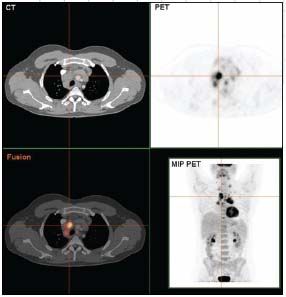Retrospective on the Last Quarter-Century in Hematologic Oncology
Twenty-five years ago, the journal ONCOLOGY came into being. At that time patients with B- and T-cell lymphomas were lumped together in clinical trials, and mantle cell lymphoma, MALT lymphoma, and many subtypes of the peripheral T-cell lymphomas were not recognized as specific entities.

Twenty-five years ago, the journal ONCOLOGY came into being. At that time patients with B- and T-cell lymphomas were lumped together in clinical trials, and mantle cell lymphoma, MALT lymphoma, and many subtypes of the peripheral T-cell lymphomas were not recognized as specific entities. The median survival of patients with follicular lymphoma was 5 to 10 years, and the cure rate for patients with diffuse large B-cell lymphoma was less than 50%. The situation for Hodgkin lymphoma was in many ways similar: the entity nodular lymphocyte–predominate Hodgkin lymphoma was not well-understood, and the treatment for patients with Hodgkin lymphoma was in development. ABVD was becoming a more frequently used regimen, but radiotherapy was still widely used at relatively high doses and with techniques that led to heart disease and secondary cancers-particularly breast cancer-in women.

Twenty-five years later the situation has changed dramatically-and much to the benefit of our patients. Our understanding of these diseases has improved considerably since the WHO classification created clear definitions for diagnoses and began to recognize many entities that were not known (and thus not well treated) a quarter of a century before. PET scanning is having a major impact on the care of patients with lymphoma-more by improving the ability to recognize a complete response than by altering staging. Today most patients with diffuse large B-cell lymphoma are cured, with the most important recent advance being the availability of rituximab. Rituximab has also had an important impact on the management of patients with follicular lymphoma, not just in terms of duration of response, but in terms of improvements in survival. Estimates of median survival for patients with low-grade follicular lymphoma who receive rituximab as part of their initial therapy (and often as a maintenance treatment) are approaching 20 years. The peripheral T-cell lymphomas are finally being studied as specific entities: we know that anaplastic large-cell lymphoma that over-expresses the ALK protein is associated with a good survival, but better regimens are still desperately needed for patients with the other subtypes. Finally, Hodgkin lymphoma is now curable in the great majority of patients, and the focus of current studies is to reduce long-term toxicity without sacrificing the high cure rate.
The future for treating patients with lymphoma continues to be bright. New agents, including lenalidomide in some B-cell lymphomas and brentuximab vedotin in Hodgkin lymphoma and the non-Hodgkin lymphomas that express the CD30 antigen, suggest that there will be continued improvements in treatment outcomes. Perhaps the most exciting possibility in this area is that ongoing studies of gene and protein expression might allow prediction of response to specific treatments, and thus, truly personalize treatment for patients with lymphoma.
Newsletter
Stay up to date on recent advances in the multidisciplinary approach to cancer.